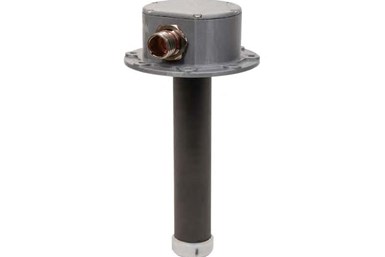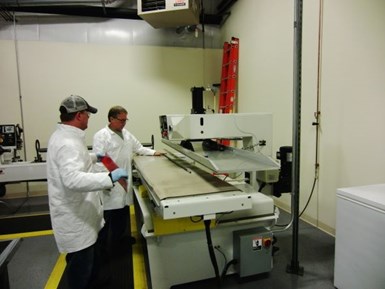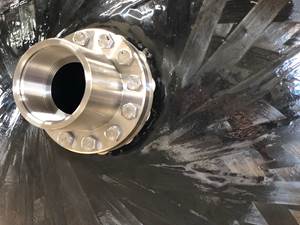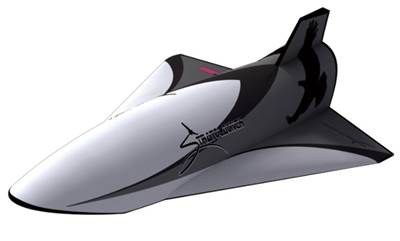
Photo Credit, all images: Liquid Measurement Systems
Founded in 1989, (LMS, Fairfax, Vt., U.S.) designs and manufactures fuel quantity gauging on rotary- and fixed-wing aircraft. Among the company’s product offerings are a range of capacitance fuel gauging probes, which each feature two concentric carbon fiber composite tubes that act as two conductive plates with dielectric current running in between.
A conventional capacitance fuel gauging system consists of two separate pieces of hardware, connected by wires: a sensor (also called a probe) and a signal conditioning unit (SCU). “The probes are passive devices which are excited and measured by an SCU to monitor and report fuel height in the tank. The SCU conditions the signals coming from all of the probes in the tank(s) and factors in probe location, tank geometry, attitude [orientation of the aircraft], fuel temperature and other variables, to calculate the total quantity of fuel in the tank — expressed in weight rather than volume,” explains Steve Pickering, director of technology at LMS. Embedded software in the SCU converts all of the data received into a value for pounds of fuel in each tank, and transmits this information to a display unit in the cockpit or on a refueling panel.
LMS has been using carbon fiber-reinforced polymer (CFRP) composites for the main structural components on its fuel gauging probes since its founding in 1989, despite aluminum being the conventional material. The company fabricates all of its fuel gauge tubes on site using a roll-wrapping process, in which layers of prepreg are rolled and taped by hand onto a mandrel and oven cured. The tubes are then untaped, cut to length and machined to a uniform diameter and wall thickness prior to assembly. For these tubes, LMS says it chose carbon fiber prepreg with a proprietary resin system for its mechanical and electrical performance properties, as well as its resistance to the corrosive and oxidative effects of jet fuel.

Compared to aluminum, using carbon fiber composites for these parts amounts to a 40% lighter part, LMS says. Plus, composites are resistant to dents, scratches, cracks and corrosion, and don’t absorb hand oils, which can affect performance. Aluminum tubes also require riveted connections to the probe’s electrical components, which can wear over time due to friction, whereas the composite tube is bonded to the electrical components.
LMS’ carbon fiber fuel gauging probes offer options that are adaptable to a range of aircraft tanks. Most recently, the company decided to develop a product specifically catered to small aircraft, aiming for higher safety, more accuracy and higher reliability within a small tank.
The resulting onboard processing probe (OPP) was launched in summer 2022. Featuring the same carbon fiber composite two-tube design as LMS’ other offerings, the OPP is an all-in-one system that combines a level-sensing probe with an SCU, eliminating the need for two pieces of hardware or complex wiring. The system is designed to act independently in a single-tank aircraft with simple tank geometry or work as one of several independent units gauging fuel quantity in one or more tanks, each unit returning its respective fuel quantity to the specified aircraft data destination.
Related Content
Development of a composite liquid hydrogen tank for commercial aircraft
Netherlands consortium advances cryogenic composites testing, tank designs and manufacturing including AFP, hybrid winding, welding of tank components and integrated SHM and H2 sensors for demonstrators in 2025.
Read MoreIndustrializing additive manufacturing in the defense/aerospace sector
GA-ASI demonstrates a path forward for the use of additive technologies for composite tooling, flight-qualified parts.
Read MorePlant tour: Airbus, Illescas, Spain
Airbus’ Illescas facility, featuring highly automated composites processes for the A350 lower wing cover and one-piece Section 19 fuselage barrels, works toward production ramp-ups and next-generation aircraft.
Read MoreInfinite Composites: Type V tanks for space, hydrogen, automotive and more
After a decade of proving its linerless, weight-saving composite tanks with NASA and more than 30 aerospace companies, this CryoSphere pioneer is scaling for growth in commercial space and sustainable transportation on Earth.
Read MoreRead Next
LMS to develop composite fuel gauge for Stratolaunch hypersonic test vehicle
Carbon fiber composite fuel probe and signal conditioner unit will meet Mach 6 aircraft speed and intense flight environment requirements.
Read MoreNext-gen fan blades: Hybrid twin RTM, printed sensors, laser shock disassembly
MORPHO project demonstrates blade with 20% faster RTM cure cycle, uses AI-based monitoring for improved maintenance/life cycle management and proves laser shock disassembly for recycling.
Read MoreScaling up, optimizing the flax fiber composite camper
Greenlander’s Sherpa RV cab, which is largely constructed from flax fiber/bio-epoxy sandwich panels, nears commercial production readiness and next-generation scale-up.
Read More
.jpg;width=70;height=70;mode=crop)












